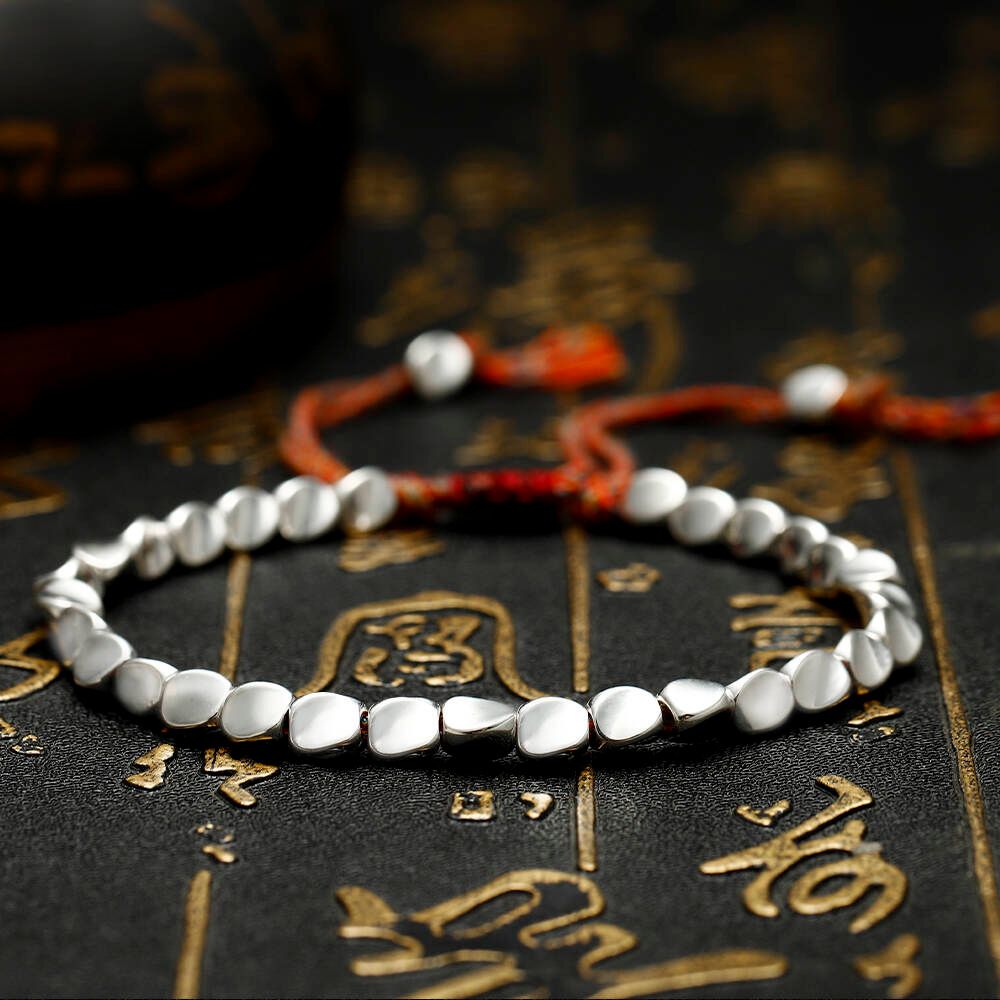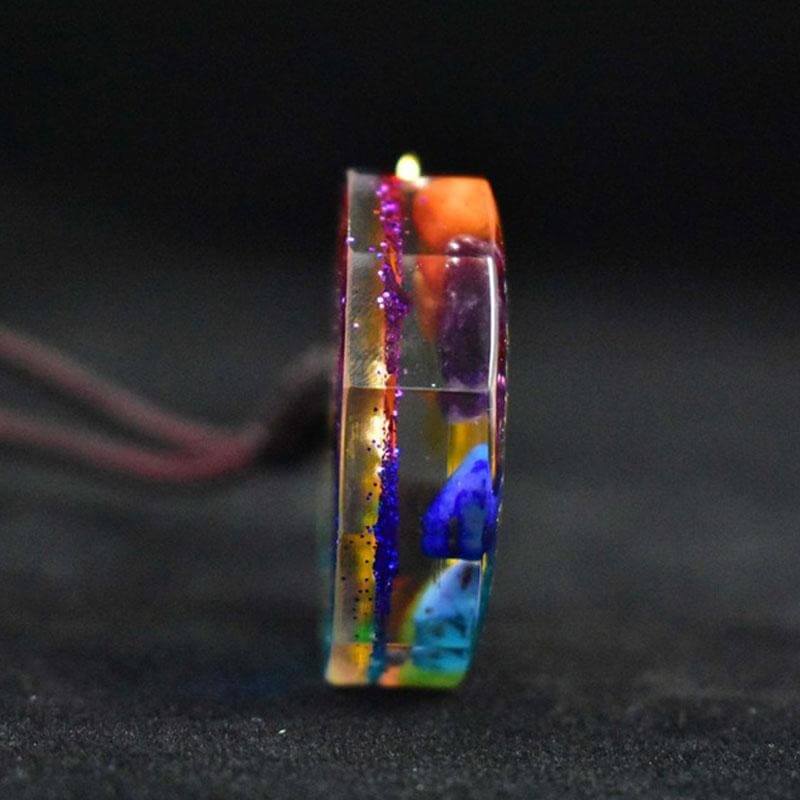Widely admired for its striking aesthetic appeal, the Hand of Fatima has become a popular motif in the world of jewelry. From necklaces to earrings and bracelets, this powerful symbol adorns many accessories loved by the fashion-conscious and spiritually-minded alike.
But what does it really mean to wear one?
This blog post delves into the historical, cultural, and spiritual significance of this captivating talisman. Join us as we uncover the Hand of Fatima meaning, shedding light onto why it continues to be an enduring symbol across the globe.
In this article
Hand of Fatima Meaning
The Hand of Fatima is a symbol believed to provide defense against the evil eye, bringing its owner happiness, luck, health, and good fortune. Also known as Hamsa or Khamsa, it is an amulet representing an open hand, sometimes adorned with an eye symbol in the middle.
Other Names Across Cultures
Hand of Fatima – Islamic Cultures
This name is most common in Islam, named after the daughter of the Prophet Mohammed, Fatima Zahra. The hand is often depicted with an eye in the center, used as a charm to defend against the evil eye. Each finger is said to represent one of the Five Pillars of Islam.
Hamsa Hand - Judaic Cultures
In Judaic cultures, the emblem is known as the Hamsa or the Hand of Miriam, named after the sister of Moses and Aaron. The hamsa hand meaning is similar, often used as an amulet to ward off the evil eye and bring the wearer good luck, abundance, health and happiness. Its history dates back to ancient Mesopotamia where it was used as a symbol of protection against bad luck and evil forces. In modern times, it has been adopted by both Sephardic and Ashkenazi Jewish communities worldwide. The five fingers of the Hamsa represent the five books of Torah in Jewish tradition.
Khamsa – North African Cultures
In North African cultures, particularly in Tunisia, Morocco and Algeria, the symbol is known as the Khamsa. The term translates to the number five in Arabic and Hebrew and it represents protection against evil. It is a widespread tradition to place the symbol in homes and vehicles and also to wear it as jewelry. The symbol has had varied interpretations, some associating it with five pillars of Islam, while others link it to pre-Islamic connotations.
The Hand of Mary - Christian Cultures
In some Christian cultures, it's referred to as the Hand of Mary, for the Mother of Jesus Christ. It's also considered by some as the symbol for the hand of god. However, this is a less common usage. Like its other cultural counterparts, it is seen as a protective charm against evil. Each finger in this context could represent a different holy virtue.
Hand of the Goddess - Hindu and Buddhist Cultures
In Hindu and Buddhist cultures, similar symbols are sometimes associated with various goddesses, such as Lakshmi and Kali. These symbols have slightly different meanings, but are often associated with strength, protection, or feminine power.
Regardless of the culture, there is a common thread of protection against negative forces, and the different versions often serve as a symbol of peace, prosperity, and protection. The design and details vary from culture to culture, but the central theme remains the same.
History and Origins

In Islam, the symbol was named in honor of Fatima Zahra, the daughter of the Prophet Muhammad. Islam regards Zahra as the perfect, pure woman, loyal to her family and children. Similarly, in Judaism, it is referred to as the ‘Hand of Miriam’, who was a prophet and the older sister of Moses and Aaron.
The symbol, also known as the Hand of of Miriam, Mary, Hamsa, and Khamsa, is popular and widely used across numerous cultures around the world. It is predominantly found in Middle Eastern countries and North Africa, specifically within the Islamic and Jewish traditions. It is believed to signify protection, power, and strength, offering defense against the ‘evil eye’ and bringing blessings, fortune, and good health.
The Hamsa’s origins are traced back to ancient Mesopotamia, where it was a universal sign of protection against evil forces. It was adopted by the Phoenicians and then by the Egyptians. Around 1500 BC, it appears that Jewish and Islamic cultures started to use the Hamsa as a protective amulet.
However, the symbol is not limited to monotheistic religions. It is also found in Buddhism, where it epitomizes the teachings of Buddha and is referred to as ‘The Hand of Buddha’. In Hinduism, it represents the interplay of the five senses, reminding humans of their rightful duties.
In modern times, the Hamsa Hand has become a popular symbol in jewelry and wall hangings. Its historical and spiritual significance, along with its simple and versatile design, makes it appealing across different cultures worldwide. Despite its varying interpretations, its central theme remains — to serve as a powerful protector against negative energy.
Why You Should Use the Hamsa Symbol
The symbol does not only lend a unique, exotic, and striking aesthetic to any piece of jewelry. It also offers a range of benefits that makes it a meaningful and thoughtful gift for friends and loved ones:
- Spiritual Protection: Since ancient times, it is believed to provide protection against negative energies and evil curses, potentially increasing the wearer's sense of security and warding off any harmful forces.
- Good Fortune: Known as an ancient symbol of good luck and prosperity, wearing Hamsa hand jewelry can be symbolic of attracting abundance and good fortune in favored areas of your life.
- Connection to the Divine: The symbol is associated with deities across multiple belief systems, helping connect you to your spirituality and reminding you of your unique spiritual journey.
- Enhance Mindfulness: Wearing it can serve as a constant reminder to stay focused, present, and mindful, enhancing overall spiritual well-being.
- Good Health: In many traditions, the Hamsa is believed to represent good health and well-being, reinforcing the intention of leading a healthy lifestyle.
- Emotional Balance: It also stands for blessings, strength, and power. Wearing it might help in achieving emotional stability and balance.
- Personal Growth: Models that include an eye in its design symbolize the increasing awareness and understanding of oneself, promoting personal growth and introspection.
Hand of Fatima Jewelry

The Hand of Fatima is a fascinating spiritual emblem that has an intricate design and profound significance. Its depiction in jewelry has been popular for centuries, and its prominent use continues to captivate a global audience today.
The symbol is typically represented as an amulet, usually shaped like an open hand with an eye in the center. The image holds an incredible beauty and allure due to its unique design.
Still, equally enticing is the symbolism attached to it. Hamsa jewelry is not just worn for its aesthetic appeal, but its symbolic value as well. Wearing this jewelry can be seen as a form of protection and a statement of faith for some, while others regard it purely as a beautiful aesthetic adornment with a compelling cultural and historical story behind it.
Jewelry featuring the symbol comes in a variety of designs, from simple, delicate pieces to more elaborate, intricate, and ornate styles. It can be crafted from a variety of materials, such as gold, silver, and precious gems, giving the wearer the freedom to choose a piece that resonates with their individual style.
Additionally, its adaptability is seen in the different types of jewelry it can be incorporated into. From necklaces, bracelets, and earrings to brooches and even rings, this symbol is a versatile addition to any jewelry collection.
Regardless, the emblem continues to remain a favorite choice among jewelry wearers around the world for its beautiful design and rich symbolism, making it not just an accessory, but a piece of meaningful art to wear.

FAQs
Which Hand to Wear the Hamsa Bracelet?
Both left and right hands can be used to wear the bracelet, but the choice between them depends on specific cultural beliefs and personal preferences. Traditionally, the right hand is considered the "giving" hand that sends out energy into the world, whereas the left hand is known as the "receiving" hand, accepting energy or influences from the external environment.
If you wish to protect yourself from negative energy, you might want to wear it on the left hand. Conversely, if you want to give positive energy to others or your surroundings, you may choose to wear it on your right hand. Ultimately, the choice depends on your intent.
Hamsa Hand: Up Or Down?
A Hamsa Hand necklace can be worn facing up or down, depending on your intent. Remember the rule when wearing the necklace. If the symbol is pointing upwards, it symbolizes protection. On the other hand, the hand facing downwards represents abundance and blessings.
Final Thoughts
The Hand of Fatima is a powerful symbol that primarily serves as a protective talisman to ward off evil, negativity, and harm. It is also associated with patience, loyalty, faith, and resistance against difficulties.
Wearing this symbol as a piece of jewelry won't only add a unique touch to your look. It would also elevate your life and empower you as you wear a piece of this spiritual jewelry.














Excited to learn about this site
Leave a comment